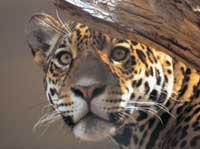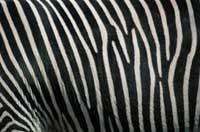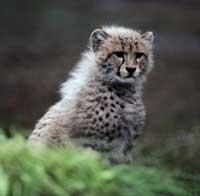Stripes and points on the skin, the challenge of mathematics

Mathematicians have long worked with animal fur drawings. To explain this certain regularity they use mathematical equations. In this work Alan Turing pioneered: In 1952 he published a mathematical model for leather drawings.
Turing explained how these special drawings are created: he assumed that in the embryo, when the animal's leather is formed, there are two special compounds that shape the drawing and that the drawings are produced as a result of the interaction between both compounds. These compounds expand in the skin, but one of them blocks the other (it is inhibitor) and the other activates it (it is activator). Based on this assumption, Turing explained the mathematical model of skin drawings.

This model replicates the drawings of different animals, since if colouring compounds are associated with the activator and inhibitor, it is observed how drawings are produced in the skin. In the case of the leopard, for example, the inhibitory compound is accompanied by a brownish color to the leather and a black color with the activator.
Therefore, this model is used to illustrate different animal drawings, such as zebra stripes or the points of that leopard. Also according to this model, turn the points of the skin of the felines into an era in the tail; or that very large and very small animals have no drawing on the skin
However, this model serves for when the skin is formed, that is, for the embryonic and small animal phase; it is not suitable for adult and older animals, it falls short. In fact, the leather of the animal changes over time and although the drawing is the same as it had on the small base, it becomes more complex. Therefore, it is more difficult to replicate leather drawings of adult or old animals. Jaguarra, for example, seems to be very difficult.

Well, some Taiwanese mathematicians have spent years looking for models of complex drawings using Turing equations, such as the jaguar. And, as you have seen, the equations are also useful for these drawings, but if they are used twice: first you have to get the model of childhood of the animal and then you have to change the parameters to reach the drawing of adulthood.
According to these mathematicians, the most difficult drawing model is that of the jaguar: despite the efforts made, it is impossible to obtain the jaguar drawing using only once the Turing equation. Therefore, the method they have presented will be very useful to replicate this type of complicated leather drawings.
Published in 7K.
Buletina
Bidali zure helbide elektronikoa eta jaso asteroko buletina zure sarrera-ontzian











